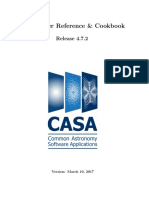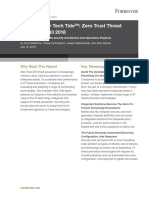0% found this document useful (0 votes)
334 views15 pagesDsa Notes
The document provides comprehensive notes on Data Structures and Algorithms (DSA), covering key concepts, types, and operations of various data structures such as arrays, linked lists, stacks, queues, trees, and graphs. It also discusses sorting and searching algorithms, recursion, dynamic programming, greedy algorithms, hashing, backtracking, and bit manipulation. The notes emphasize the importance of DSA in writing efficient code and improving problem-solving skills, especially for technical interviews.
Uploaded by
Nithin Chaitanya JonnadaCopyright
© © All Rights Reserved
We take content rights seriously. If you suspect this is your content, claim it here.
Available Formats
Download as PDF, TXT or read online on Scribd
0% found this document useful (0 votes)
334 views15 pagesDsa Notes
The document provides comprehensive notes on Data Structures and Algorithms (DSA), covering key concepts, types, and operations of various data structures such as arrays, linked lists, stacks, queues, trees, and graphs. It also discusses sorting and searching algorithms, recursion, dynamic programming, greedy algorithms, hashing, backtracking, and bit manipulation. The notes emphasize the importance of DSA in writing efficient code and improving problem-solving skills, especially for technical interviews.
Uploaded by
Nithin Chaitanya JonnadaCopyright
© © All Rights Reserved
We take content rights seriously. If you suspect this is your content, claim it here.
Available Formats
Download as PDF, TXT or read online on Scribd
/ 15
























































































